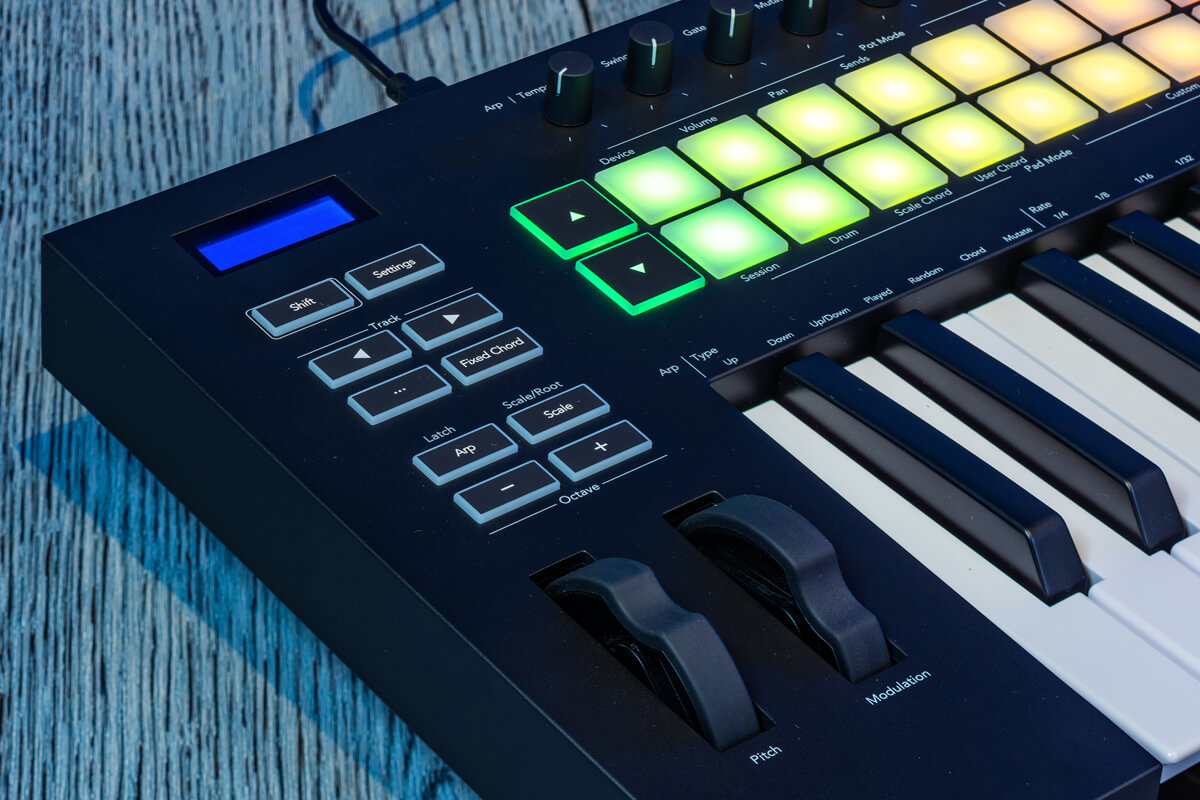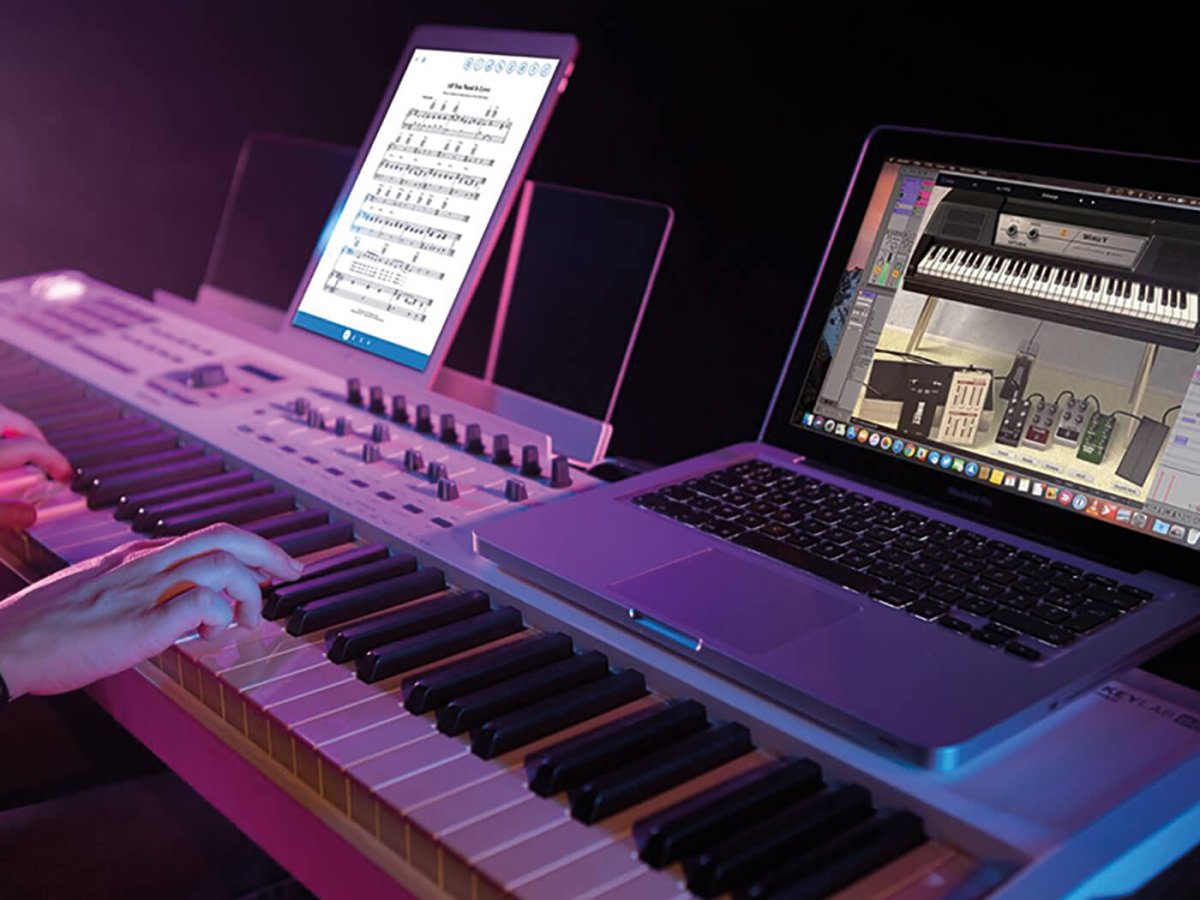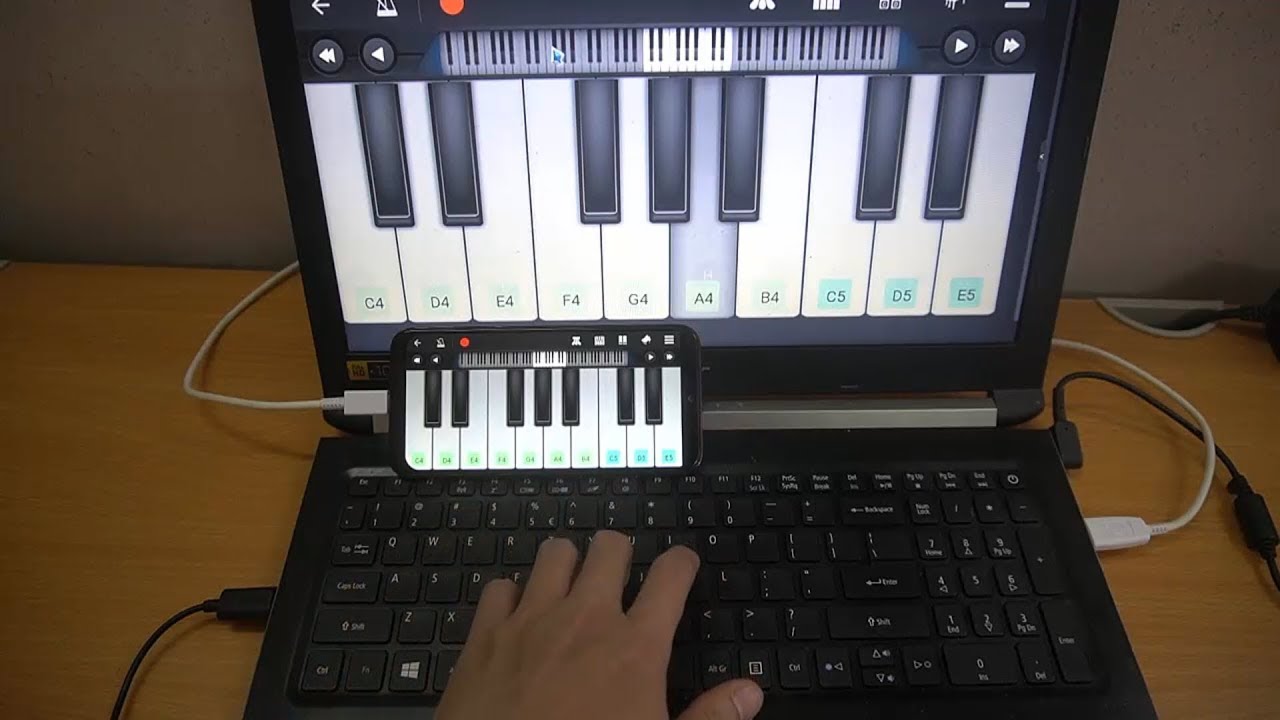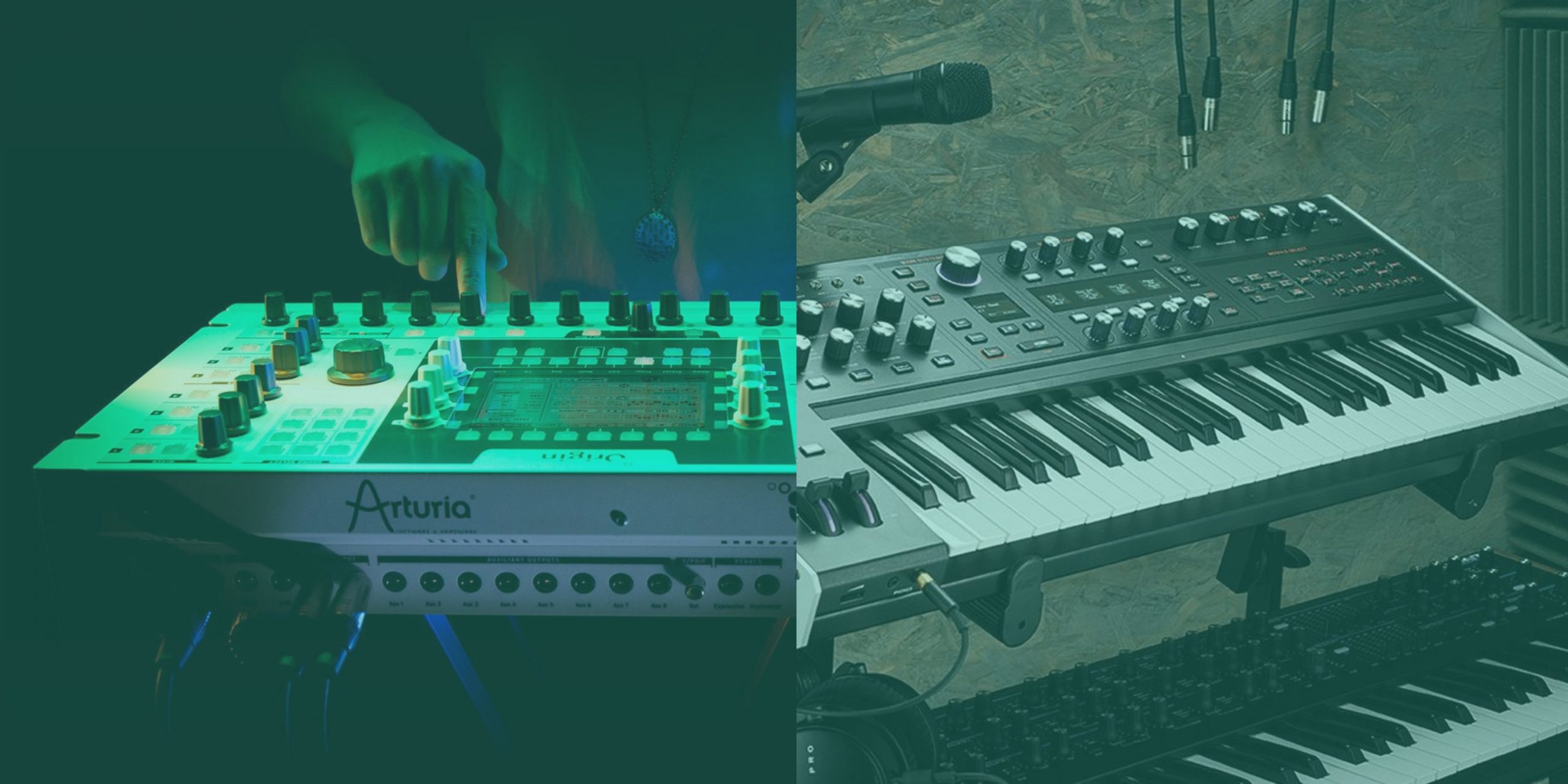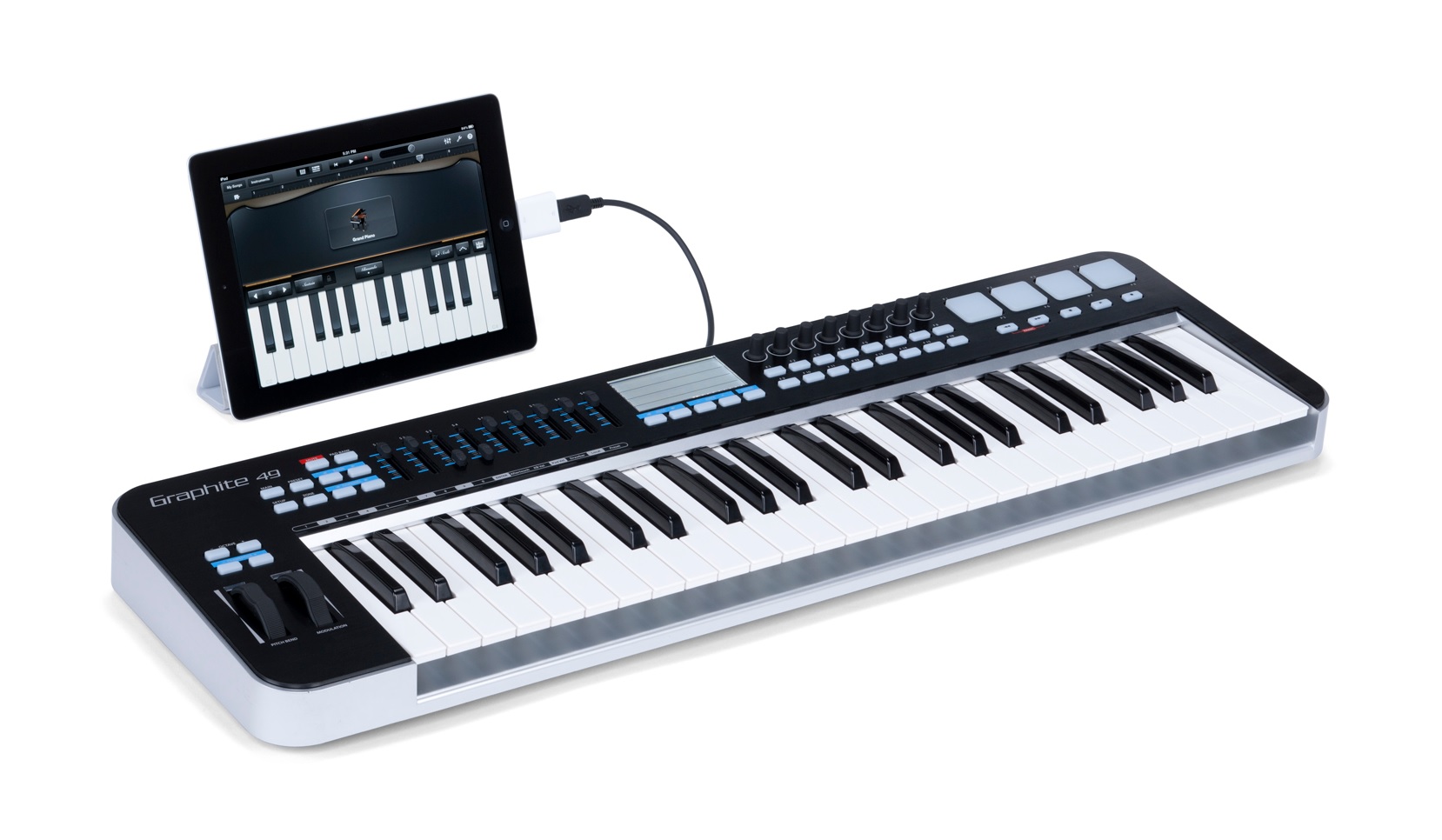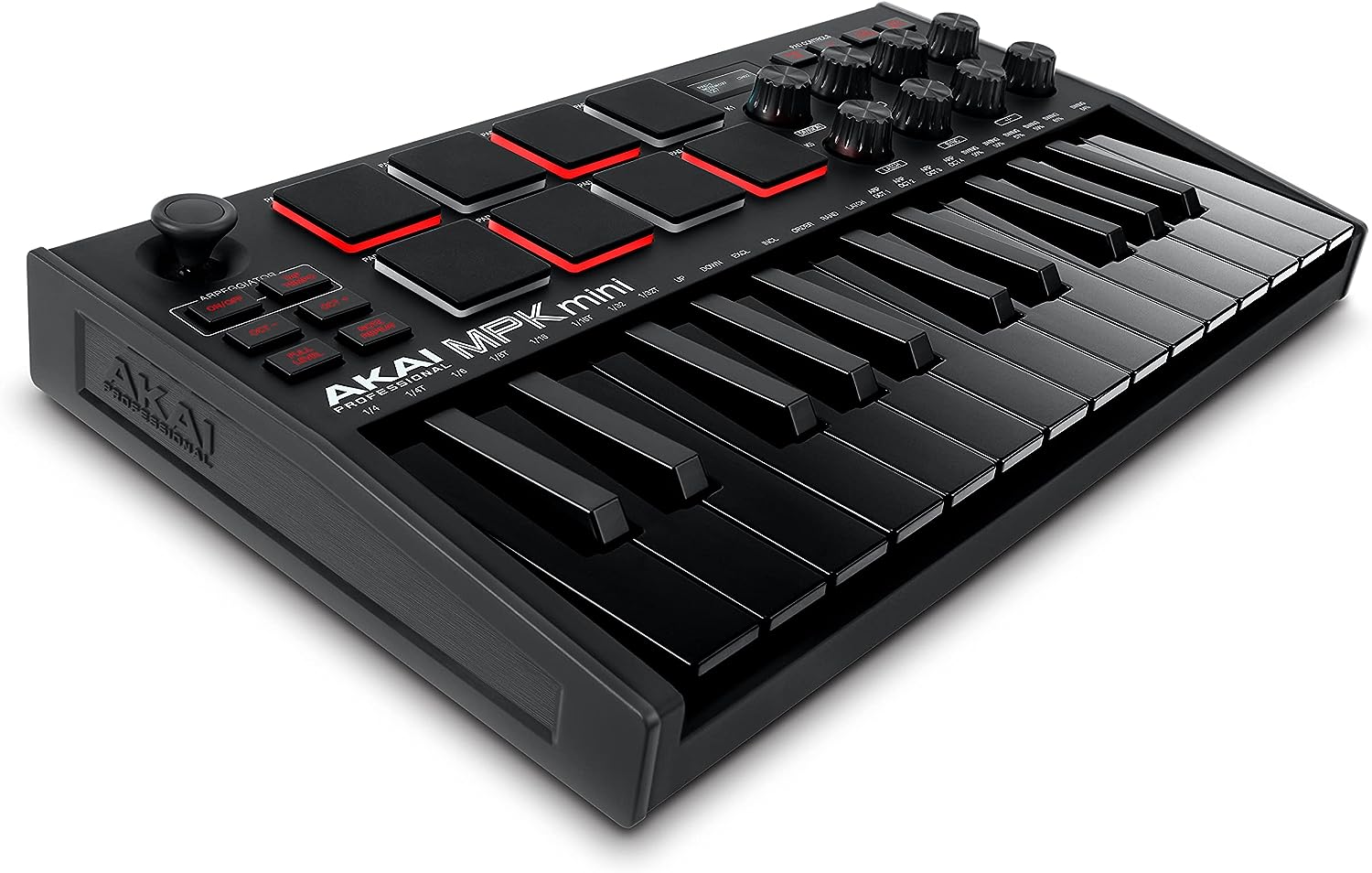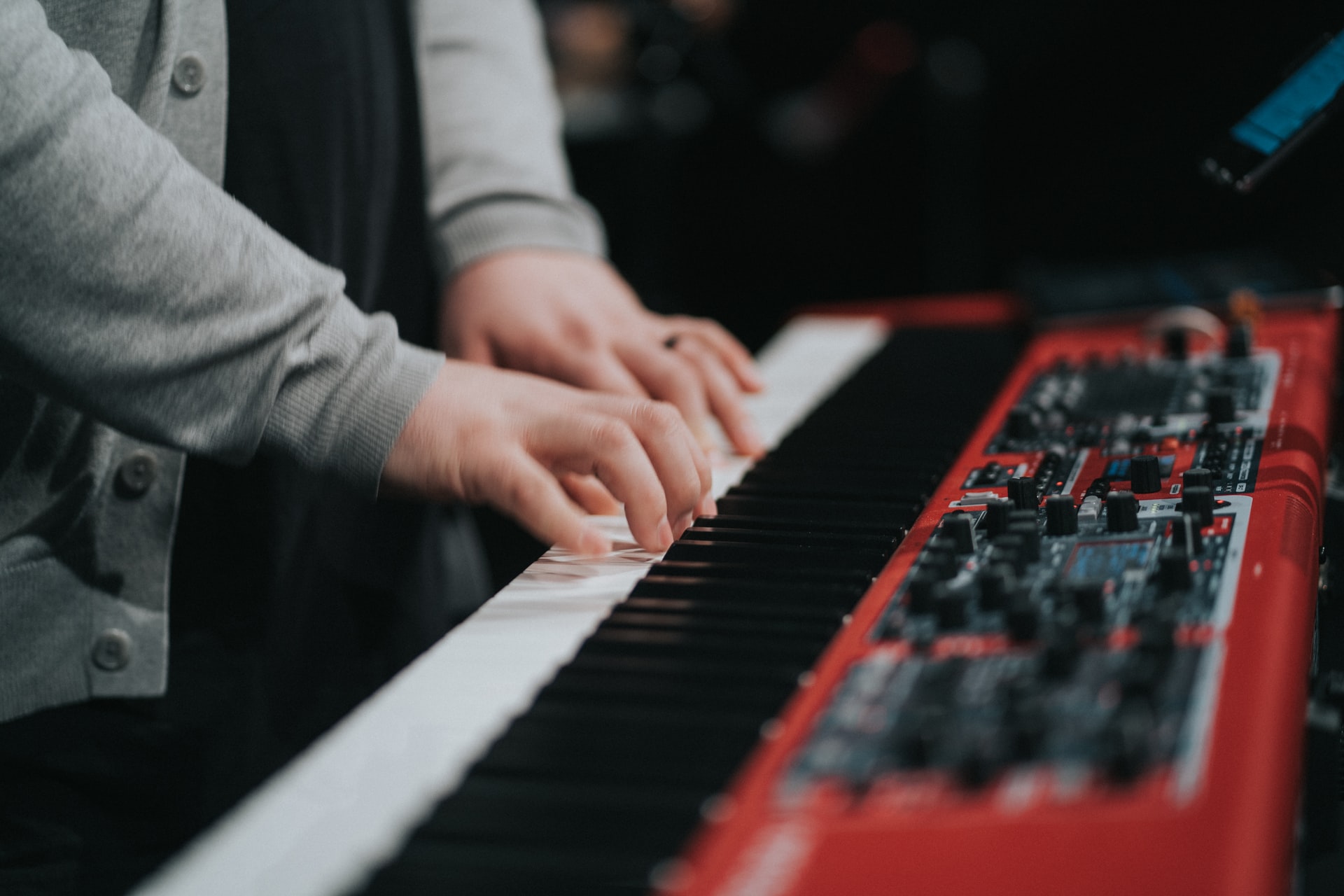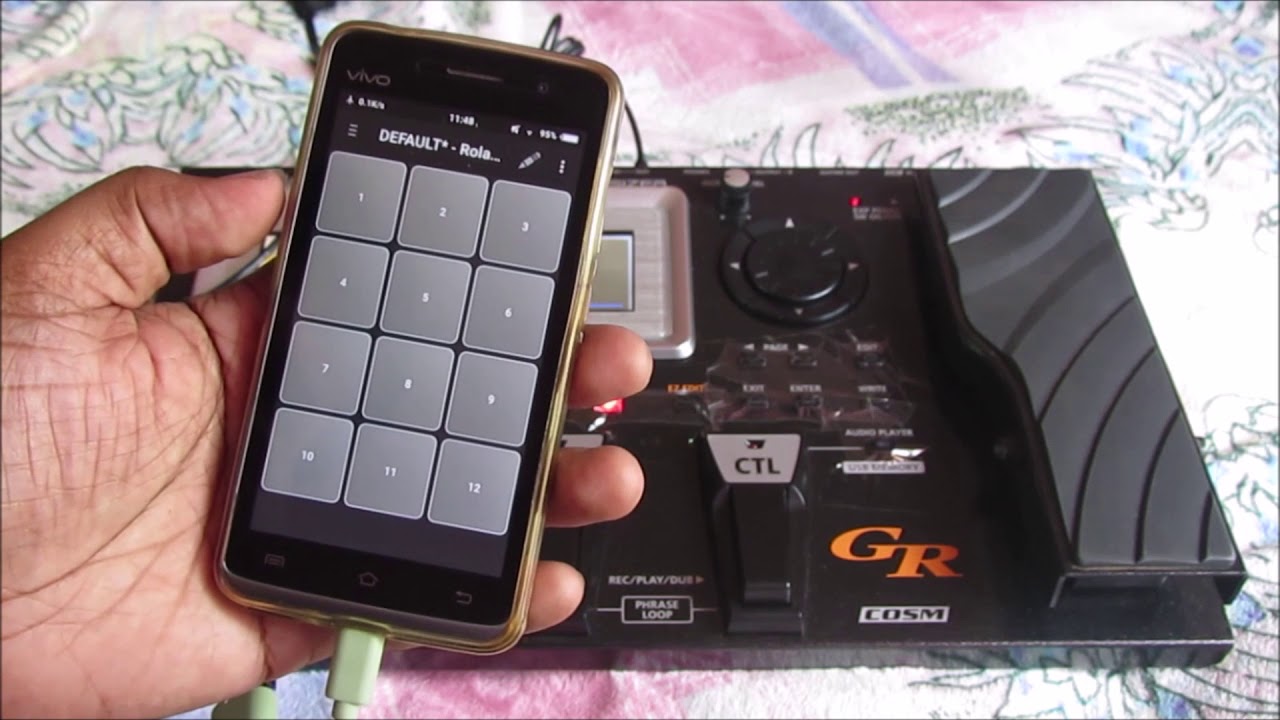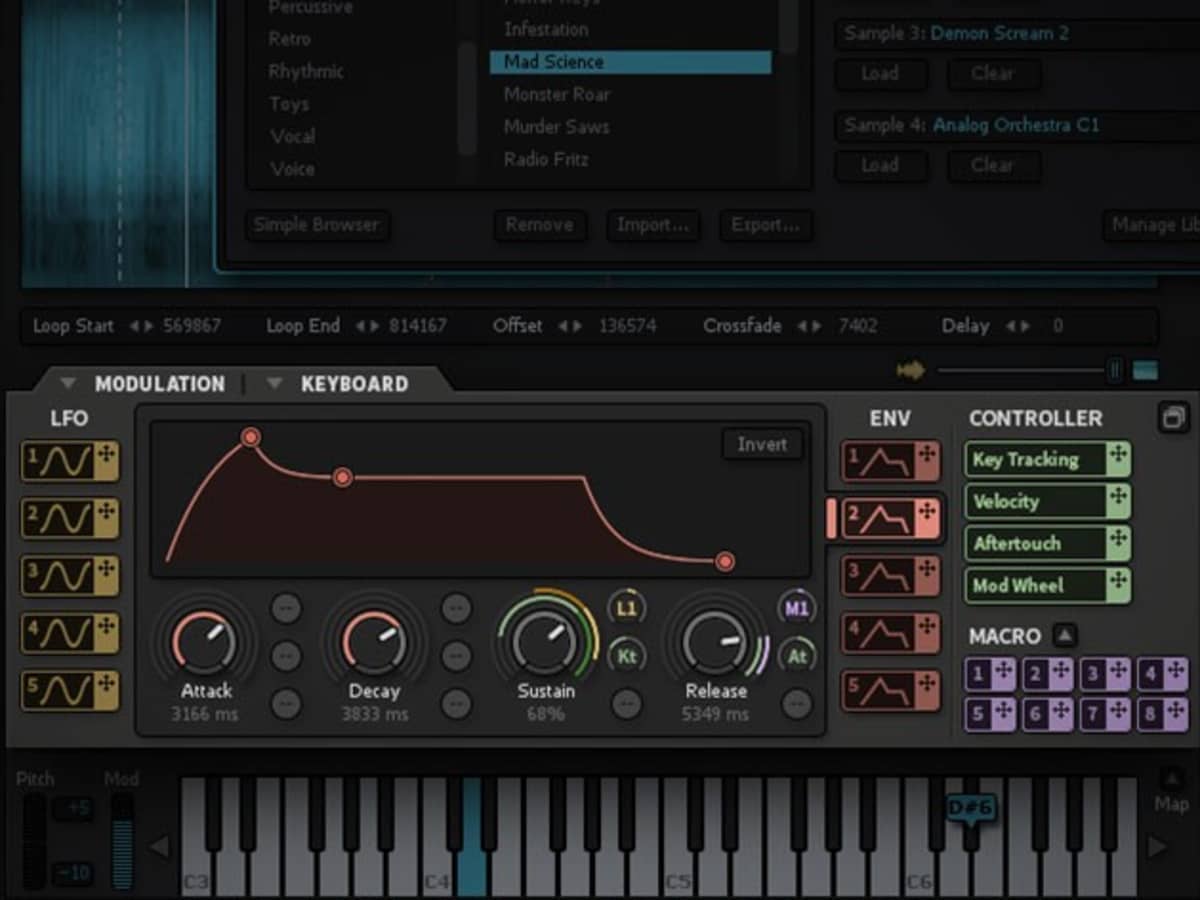Introduction
So, you’ve just purchased a MIDI keyboard, and you’re eager to dive into the world of music production. But before you can start creating your musical masterpieces, you’ll need to equip yourself with the right software to harness the full potential of your MIDI keyboard. Whether you’re a seasoned musician or a budding producer, the software you choose can significantly impact your creative process and the quality of your output.
From Digital Audio Workstations (DAWs) to virtual instruments and MIDI controller mapping software, the options can be overwhelming. Each type of software serves a distinct purpose, catering to different aspects of music production. Understanding the role of each software category and how it complements your MIDI keyboard is crucial in making an informed decision.
In this article, we’ll explore the various types of software that can be used in conjunction with your MIDI keyboard, shedding light on their functionalities and how they can enhance your music production experience. Whether you’re looking to lay down intricate compositions, experiment with different sounds, or streamline your workflow, there’s a diverse array of software options to suit your specific needs. By the end of this guide, you’ll have a clearer understanding of the software landscape and be better equipped to make the right choices for your musical journey.
DAWs (Digital Audio Workstations)
When it comes to music production, a Digital Audio Workstation (DAW) is the beating heart of the process. It serves as the central hub where all the elements of a musical composition come together, allowing you to record, arrange, mix, and master your tracks. DAWs offer a wide range of tools and features that empower musicians and producers to bring their creative visions to life.
One of the key advantages of using a DAW with your MIDI keyboard is the ability to record and edit MIDI data. This means that you can capture the nuances of your performance, including note velocity, pitch bends, and modulation, and fine-tune them to perfection. Additionally, DAWs provide a platform for integrating virtual instruments and effects, enabling you to explore a vast sonic palette and sculpt your sounds with precision.
Modern DAWs often come equipped with robust mixing and mastering capabilities, allowing you to polish your tracks to a professional standard. From EQ and compression to reverb and delay, these tools empower you to shape the tonal characteristics and spatial dimensions of your music. Furthermore, the arrangement view in DAWs provides a visual canvas for structuring your compositions, making it easy to arrange and rearrange musical ideas seamlessly.
Some popular DAWs that seamlessly integrate with MIDI keyboards include Ableton Live, Logic Pro, FL Studio, Pro Tools, and Cubase. Each DAW offers its own unique workflow and features, catering to different styles of music production and individual preferences. Whether you prefer a clip-based approach to composition or a traditional linear timeline, there’s a DAW that aligns with your creative process.
Ultimately, the choice of DAW is a deeply personal one, influenced by factors such as workflow, feature set, and compatibility with your MIDI keyboard. By selecting a DAW that resonates with your creative instincts, you can harness the full potential of your MIDI keyboard and embark on a musical journey filled with endless possibilities.
Virtual Instruments and Plugins
Virtual instruments and plugins play a pivotal role in expanding the sonic horizons of your MIDI keyboard. These software-based instruments emulate the sounds of traditional acoustic instruments, synthesizers, and exotic sonic textures, offering an extensive palette of musical timbres at your fingertips. By integrating virtual instruments and plugins with your MIDI keyboard, you can access an infinite array of sounds and textures to enrich your compositions.
From realistic emulations of grand pianos and vintage synthesizers to cutting-edge electronic soundscapes and orchestral ensembles, virtual instruments cover a broad spectrum of musical genres and styles. Whether you’re a pianist, a synth enthusiast, or an orchestral composer, there are virtual instruments tailored to your specific musical inclinations.
Plugins, on the other hand, expand the functionality of your DAW by providing additional effects and processing tools. From EQs, compressors, and reverbs to creative modulation effects and spectral processors, the world of plugins offers an abundance of sonic sculpting possibilities. By integrating plugins with your DAW and MIDI keyboard, you can elevate the sonic character of your music and imbue it with depth and dimension.
Popular virtual instrument and plugin formats include VST (Virtual Studio Technology), AU (Audio Units), and AAX, with VST being the most widely supported across different DAWs. This compatibility ensures that you can seamlessly integrate virtual instruments and plugins into your music production workflow, regardless of the DAW you choose to use.
Furthermore, many virtual instruments and plugins are designed to be MIDI-controllable, allowing you to manipulate parameters such as filter cutoff, resonance, envelope settings, and more using the knobs, faders, and pads on your MIDI keyboard. This level of tactile control adds a dynamic and expressive dimension to your music-making process, enabling you to infuse your performances with nuance and personality.
By incorporating virtual instruments and plugins into your music production toolkit, you open the door to a boundless sonic universe, where creativity knows no bounds. Whether you’re seeking to evoke the warmth of analog hardware or sculpt futuristic soundscapes, virtual instruments and plugins empower you to realize your sonic aspirations with unparalleled flexibility and expressiveness.
MIDI Controller Mapping Software
As you delve deeper into the realm of music production, you’ll discover the immense potential of MIDI controller mapping software in enhancing the functionality and versatility of your MIDI keyboard. This specialized software allows you to customize and map the controls of your MIDI keyboard to various parameters within your DAW and virtual instruments, offering a tailored and intuitive interface for manipulating sound and performance elements.
One of the primary benefits of MIDI controller mapping software is the ability to create personalized control mappings that align with your unique workflow and creative preferences. This customization empowers you to assign MIDI knobs, faders, buttons, and pads to specific functions within your DAW or virtual instruments, providing seamless access to essential parameters without the need to rely solely on mouse and keyboard inputs.
For instance, you can map the knobs and faders on your MIDI keyboard to control parameters such as filter cutoff, resonance, envelope settings, and effects parameters within your virtual instruments and plugins. This hands-on approach to sound manipulation fosters a deeper connection with your music, allowing you to shape and modulate sounds in real time with tactile precision.
Furthermore, MIDI controller mapping software often supports the creation of custom MIDI scripts and templates, enabling you to tailor the behavior of your MIDI keyboard to suit specific production tasks or performance scenarios. Whether you’re triggering clips, adjusting mixer levels, or automating parameters, the ability to create bespoke control mappings empowers you to streamline your workflow and focus on the creative aspects of music production.
Additionally, some MIDI controller mapping software offers advanced features such as MIDI scripting, macro controls, and deep integration with specific DAWs, providing an elevated level of control and flexibility. This level of customization ensures that your MIDI keyboard becomes an extension of your musical expression, allowing you to unleash your creativity without constraints.
Popular MIDI controller mapping software includes Ableton Live’s MIDI mapping functionality, Native Instruments’ Controller Editor, and third-party applications such as Bome MIDI Translator Pro and MIDI-OX. These tools cater to a wide range of MIDI controllers, offering intuitive interfaces and robust customization options to suit the diverse needs of musicians and producers.
By embracing MIDI controller mapping software, you can transform your MIDI keyboard into a highly personalized and expressive instrument, tailored to your creative vision and production requirements. Whether you’re sculpting intricate soundscapes or performing live, the ability to map and customize your MIDI controller empowers you to shape your music with unparalleled fluidity and finesse.
Notation Software
While MIDI keyboards are often associated with music production and performance, they also hold significant value in the realm of music notation and composition. Notation software, designed to transcribe musical ideas into readable and printable scores, can seamlessly integrate with MIDI keyboards, offering a versatile platform for capturing and arranging musical compositions.
One of the primary advantages of using notation software with a MIDI keyboard is the ability to input musical notes and symbols in real time, leveraging the keyboard’s velocity-sensitive keys to capture dynamic nuances and articulations. This real-time input method provides a fluid and expressive means of transcribing musical ideas, allowing composers and arrangers to preserve the subtleties of their performances with precision.
Furthermore, notation software often supports MIDI playback, allowing composers to audition their compositions using the sounds of virtual instruments or external MIDI devices. This feature enables composers to assess the musical flow, dynamics, and orchestration of their compositions, providing a comprehensive perspective on how the notated music will sound when performed by live musicians.
Moreover, notation software can facilitate the integration of MIDI data into the score, allowing composers to refine and edit their compositions with a high degree of accuracy. By leveraging the MIDI data captured during performance, composers can fine-tune note durations, adjust tempos, and experiment with different instrumentations, ensuring that the notated score accurately reflects their musical intentions.
Notation software also offers powerful tools for arranging and orchestrating music, allowing composers to manipulate and reposition musical elements with ease. Whether it’s transposing sections, harmonizing melodies, or creating complex musical textures, the intuitive interfaces of notation software empower composers to sculpt their musical ideas into cohesive and polished scores.
Popular notation software such as Sibelius, Finale, and Dorico seamlessly integrate with MIDI keyboards, providing intuitive input methods and comprehensive music notation capabilities. These platforms cater to a wide range of musical styles and scoring requirements, offering a versatile environment for composers, arrangers, and educators to bring their musical visions to life.
By embracing notation software alongside your MIDI keyboard, you can bridge the worlds of performance and composition, leveraging the expressive capabilities of the keyboard to craft intricate and compelling musical scores. Whether you’re transcribing a piano sonata, orchestrating a symphonic opus, or arranging a film score, notation software empowers you to capture and realize your musical ideas with precision and artistry.
Conclusion
As you navigate the diverse landscape of software options for your MIDI keyboard, it becomes evident that the synergy between hardware and software is pivotal in shaping your musical journey. From the expansive capabilities of Digital Audio Workstations (DAWs) to the boundless sonic palettes offered by virtual instruments and plugins, each category of software contributes to a multifaceted and immersive music production experience.
The integration of MIDI controller mapping software further amplifies the potential of your MIDI keyboard, transforming it into a customizable and expressive interface for manipulating sound and performance parameters. This level of customization not only streamlines your workflow but also fosters a deeper connection with your music, allowing you to shape and modulate sounds with tactile precision.
Notation software, while often overlooked in discussions about MIDI keyboards, serves as a vital tool for composers and arrangers, enabling them to transcribe, arrange, and refine musical compositions with a seamless integration of MIDI data. The ability to capture dynamic nuances and audition compositions using virtual instruments adds a new dimension to the creative process, bridging the realms of performance and composition.
Ultimately, the software you choose to accompany your MIDI keyboard should align with your creative aspirations, workflow preferences, and musical objectives. Whether you’re crafting intricate soundscapes, transcribing orchestral scores, or performing live electronic sets, the right software empowers you to realize your musical vision with fluidity and finesse.
By understanding the distinct roles of DAWs, virtual instruments, MIDI controller mapping software, and notation software, you gain the insight needed to make informed decisions that enhance your music production endeavors. Each software category contributes a unique layer of functionality, creativity, and control, ensuring that your MIDI keyboard becomes a versatile and indispensable tool in your musical arsenal.
As you embark on your creative odyssey, exploring the myriad possibilities offered by software in tandem with your MIDI keyboard, remember that the synergy between technology and artistry is a catalyst for innovation and expression. Embrace the software that resonates with your musical identity, and let it inspire you to craft sonic landscapes that captivate and resonate with audiences around the world.







